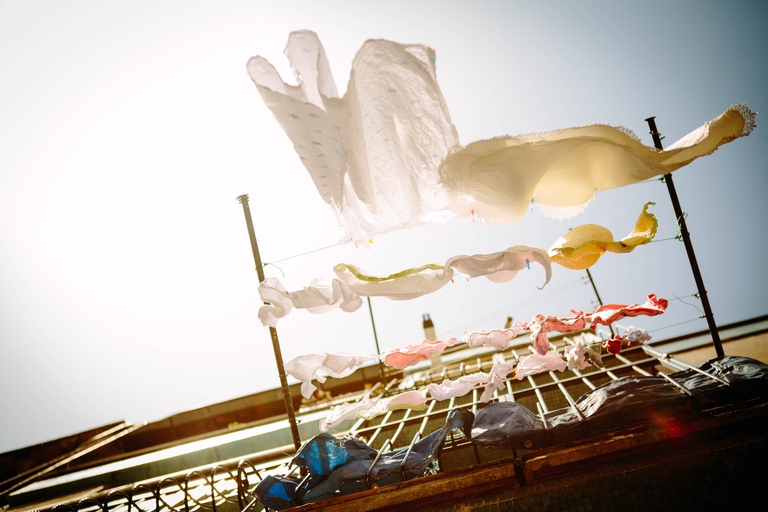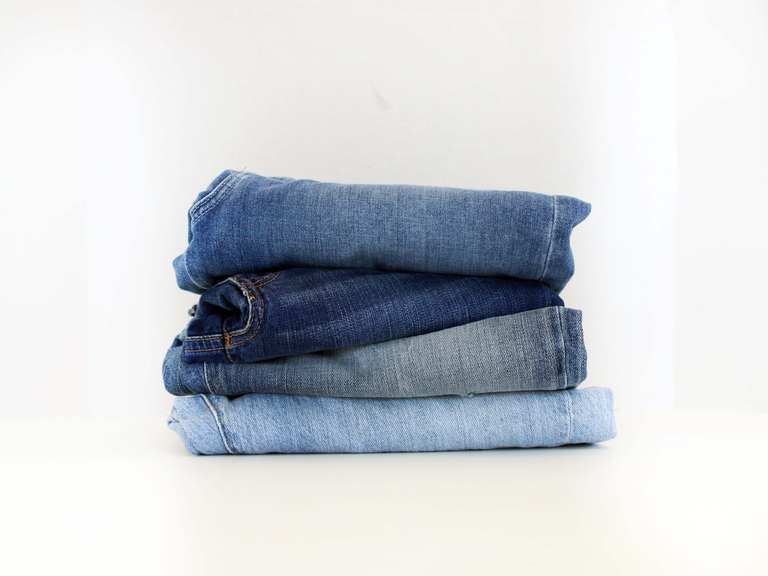https://www.lifegate.it/rame-grafite-e-calamari-le-innovazioni-che-rivoluzionano-lindustria-tessile
- |
- It often happens that innovations developed in other sectors such as biology, construction and the military are then borrowed into textiles to solve problems or make processes more efficient.
- In terms of sustainability, many of these innovations could bring enormous advantages because they were developed to solve problems not connected with textiles, but which then find widespread use there too.
- Making processes more efficient, making fibers more durable or thermoregulating, reducing waste to zero are all possible thanks to new and old technologies that are applied to this sector today.
A fabric with super properties created by imitating squid
Synthetic biology will likely be one of the driving sectors of the coming decades.Research in this area, although it often has somewhat disturbing aspects - it essentially involves recreating living beings or parts of them in the laboratory - is galloping and its intended uses are not limited to medicine, but also reach sectors apparently totally separate like that of textiles.It seems for example that, starting from genes contained in the tentacles of squid, fibers with thermoplastic properties can be extracted.That's what the company does Tandem Repeat of Philadelphia who, thanks to ten patents and fundraising of 5.6 million dollars, spent five years to arrive at the definition of a molecule that imitates the dental ring of squid.What you get is essentially a protein powder that is dissolved in a solvent – which can then be recycled – and in doing so produces a fiber that the company has called Squitex and that can be combined with other textile fibers to create clothes.

But why, among all the existing organisms in the world, did this Philadelphia company go and replicate squid?The first reason lies in one resistence and in one durability unparalleled guaranteed with minimal use of natural resources (the squid are only used as a model to replicate their molecules, they are not involved in the process because the molecules are recreated in the laboratory), soil and energy, but not only:beyond being biodegradable this fiber also has self-healing properties.A piece of fabric obtained with Squitex, if cut, can be easily repaired by immersing the fabric in water and combining it with a new layer:this is what you see in a demonstration video on the Tandem Repeat website but, beyond this application which perhaps few would use, the real advantage lies in the resistance of the fiber itself and its durability.
Copper in the fibers to make them self-cleaning
Dr. Rajesh Ramanathan is a researcher at Ian Potter NanoBioSensing Facility and NanoBiotechnology Research Lab at RMIT University in Melbourne, in Australia, and with his team he has developed a technology capable of making the self-cleaning textile fibres.Or rather, this technology means that by placing the fabric under the light the stains "melt".

This happens when particles are placed in the textile fibers nanostructures based on copper and silver:these are able to absorb light and cause the metal nanoparticles to become excited, producing the degradation of the organic structure that makes up the stains.In practice, the stains degrade thanks to solar energy, or even that of a simple light bulb, in a process that can last from a few minutes to half an hour.Clearly this is a completely embryonic experimentation, the system has currently been tested on stains, but not on sweat for example, but if there was a margin of practical application it would first of all allow save a lot of water – that given by household washing – and then of avoid the dispersion of microplastics in the case of clothes made with synthetic fibres.
Graphite in jeans to make them antibacterial and thermoregulated
In addition to copper and silver, there are those who have thought of combining carbon with textile fibres.Graphene, which is nothing other than carbon, has the reputation of being a marvelous material thanks to its many properties, among which that of being an excellent conductor, therefore also a temperature regulator, and to have one antibacterial function.The Candiani denim manufacturing company, collaborating with Directa Plus – market leader in the production of graphene – has created a pair of jeans that it calls Graphito with the aim of producing trousers that are easy to wear wearable in both summer and winter and that requires fewer washes than normal.

The graphene in denim has the function of distribute the heat more evenly:the effects of climate changes make the classic 14 oz are no longer suitable trousers for summer, the time of year when temperatures are too high to wear a long, heavy garment comfortably:lowering their weight, however, means making them too light for the winter.Graphene, thanks to its activity as a conductor, eliminates this problem, it is not for nothing that it is also used to make firemen's uniforms:on the one hand it has a flame-breaking action, and on the other it cools down immediately as soon as the firefighter has moved away from the heat source, maintaining a constant body temperature.Furthermore, a fabric, when impregnated with graphene, it is less prone to generating mold and bacteria, washing it is therefore necessary less frequently:a significant saving in terms of water consumption, if we consider that 80 percent of the environmental impact of jeans during their life cycle is caused by household washing.
3D printers and virtual reality to avoid waste
If the first prototypes of 3D printers that saw the light in the mid-1980s did not seem to be intended for fabrics, today we know that those are also among the possible applications.This type of production is particularly enhanced from the point of view of sustainability because completely eliminates the waste of raw materials, allowing you to use only what you need and thus eliminating waste waste due to cuts.This clearly also has an effect on manpower, which will be needed in smaller quantities and, at the moment, it is difficult to hypothesize whether this will change workers' conditions for better or worse, but it will certainly force companies in the sector to reflect on the topic.
For the textile industries, sample production is key:they are an essential tool for sales campaigns, but ultimately they have a very short life compared to the use - and waste - of material they entail.So virtual reality offers a possible solution thanks to digital samples, which can replace physical ones during sales campaigns and avoid an unnecessary waste of resources both in terms of materials and CO2 consumption.The same sample, depending on the size of the company, can travel a lot around the world before completing its task. With digital samples, the problem of transportation would also be eliminated.
